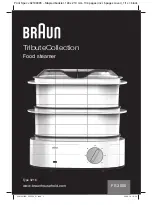
MAINTENANCE
Read all of this manual to become thoroughly familiar with this vehicle. Pay particular attention to all Notices, Cautions, Warnings, and Dangers.
5 - 18
5
When cleaning the outside of the batteries and terminals, do not use a water hose without first spraying the batteries
with a solution of baking soda (sodium bicarbonate) and water to neutralize any acid deposits. Use of a water hose
without first neutralizing the acid will move the acid from the top of the batteries to another area of the vehicle or stor-
age facility, where it will attack the metal structure or the concrete/asphalt floor. After hosing down the batteries, a
residue will be left on the batteries which is conductive and will contribute to the discharge of the batteries.
The correct cleaning technique is to spray the top and sides of the batteries with a solution of baking soda and water.
This solution is best applied with a garden-type sprayer equipped with a non-metallic spray wand or plastic spray
bottle. The solution should consist of baking soda mixed with clear water. In addition to the batteries special attention
should be paid to metallic components adjacent to the batteries, these should also be sprayed with the baking soda
solution.
Allow the solution to set for at least three
minutes; use a soft bristle brush or cloth to
wipe the tops of the batteries in order to
remove any residue that could cause the
self-discharge of the battery. Rinse the
entire area with low pressure clear water.
All of the items required for complete bat-
tery cleaning and watering are contained in
the Battery Maintenance Kit (P/N 25587-
G01).
Cleaning should take place once a month
or more often under extreme conditions.
After batteries are clean and dry, the termi-
nals should be coated with a commercially
available protectant.
Aerosol containers
of battery terminal protectant must be
used with extreme care. Insulate the
metal container to prevent the can from
contacting the battery terminals.
Battery Replacement
Before any electrical service is performed on TruCourse technology model vehicles, the Run-Tow/Maintenance
switch must be placed in the ‘Tow/Maintenance’ position.
If a power wire (battery, motor or controller) is disconnected for any reason, the Run-Tow/Maintenance switch must
be left in the ‘Tow/Maintenance’ position for at least 30 seconds after the circuit is restored.
Remove battery hold downs and cables. Lift out batteries with a commercially available lifting device.
If the batteries have been cleaned and any acid in the battery rack area neutralized as recommended, no corrosion
to the battery racks or surrounding area should be present. Any corrosion found should be immediately removed with
a putty knife and a wire brush. The area should be washed with a solution of sodium bicarbonate (baking soda) and
water and thoroughly dried before priming and painting with a corrosion resistant paint.
The batteries should be placed into the battery racks and the battery hold downs tightened to 45 - 55 in. lbs. (5 - 6
Nm) torque, to prevent movement but not tight enough to cause distortion of the battery cases.
Inspect all wires and terminals. Clean any corrosion from the battery terminals or the wire terminals with a solution of
sodium bicarbonate (baking soda) and brush clean if required.
1 1/2 GAL (6 Liters) Water
Non-Metalic Wand
1/4 Cup (60 ML)
Baking Soda
2 GAL (8 Liters)
Gargen Sprayer
(1 1/2 GAL (6 Liters)
Baking Soda Solution
1 quart
(1 liter)
Clear Water
2 Teaspoons
(10 ml)
Sodium
Bicarbonate
(Baking Soda)
Plastic
Spray
Bottle
OR
Preparing Acid Neutralizing Solution
Summary of Contents for 622014
Page 1: ...622014 Owner s Guide ISSUED JULY 2011 REVISED APRIL 2013 ...
Page 81: ......















































